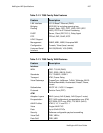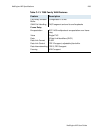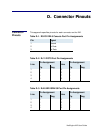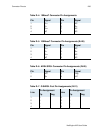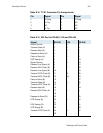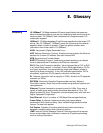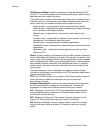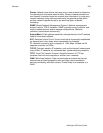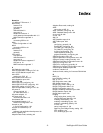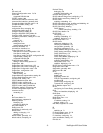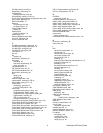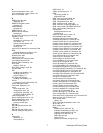NetEngine IAD User Guide
Glossary 295
OSI Reference Model. Network architectural model developed by ISO
and ITU-T. The model consists of the following seven layers, each of which
specifies particular network functions.
The lowest layer is closest to the media technology and the highest layer is
closest to the user. The hardware and software implement the lower two
layers, while only the software implements the upper five layers.
Physical layer—the actual wires and connections in the network.
Data link layer—responsible for physical addressing, network topology,
error notification and ordered delivery.
Network layer—responsible for connectivity, path selection and
routing.
Transport layer—responsible for network communication, virtual circuit
management, fault detection and flow control.
Session layer—manages sessions between applications.
Presentation layer—responsible for data structures used by networked
applications.
Application layer - networked software applications such as e-mail,
Telnet and FTP.
Packet. Logical grouping of information that includes a header containing
control information and (usually) user data. Packets refer to network layer
units of data, with messages divided into several packets. Some networks
use fixed packet sizes; others use variable packet sizes. Packets typically
have standard header information that identifies the packet. In contrast,
frames contain only data; information about the frames transmits on the
control plane.
The terms datagram, frame, message and segment describe logical
information groupings at various layers of the OSI reference model and in
various technology circles.
PPP. Point-to-Point Protocol. a successor to SLIP that provides router-to-
router and host-to-network connections over synchronous and
asynchronous circuits.
Poisoned Reverse RIP. Feature to set routes learned on the same port
as the transmitted RIP message an infinite distance. Prevents the
propagation of routes from crashed routers through the network.
PVC. Permanent Virtual Circuit. PVCs save bandwidth associated with
circuit establishment and tear down in situations where certain virtual
circuits must exist all the time.
RFC. Request for Comments. Documents that detail operation of the
Internet. To obtain these document, go to www.rfc-editor.org.
RIP. Routing Information Protocol. Internet protocol used to exchange
routing information within a system. RIP uses hop count as a routing
metric.



